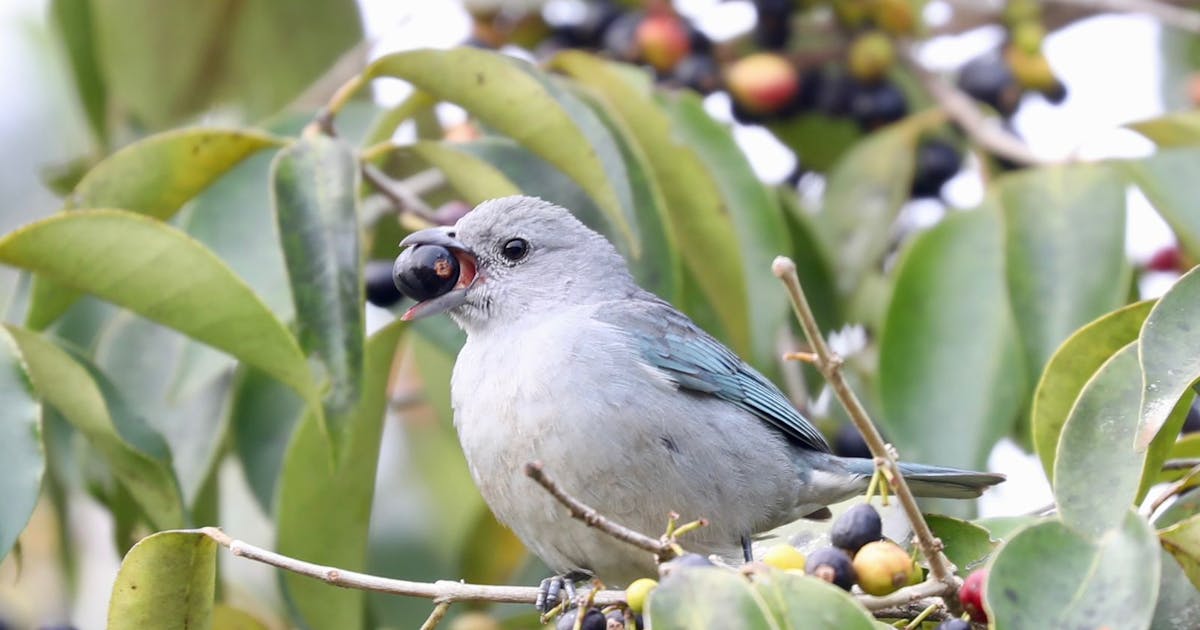When you’re hungry and far from home, you might find yourself being less picky about what you eat.
Not so for birds. The further they are from the core of their habitats, the pickier they get, according to a first-of-its-kind study from Conservation International, the University of Canterbury, São Paulo State University and others that investigated the feeding behavior of nearly 100 bird species across six continents.
Turns out, birds’ feeding preferences are highly connected to environmental stressors — and changes in their behavior could have major impacts on forests and other critical ecosystems that rely on birds to disperse seeds, said Conservation International climate expert Camila Donatti, a study co-author.
Researchers were surprised by the findings.
“In general, birds look for fruits that perfectly fit the size of their beak — so they can just grab and go,” she said. “We thought that in the birds’ core habitat — where individuals typically spend most of their time — they would be choosier about the fruit they eat since there is a larger variety of it.”
Not quite. Donatti and others found that when birds are at the edges of their habitats, they contend with stressors like new climate conditions, different predators or competition for resources.
“Because being at the outer limits of their habitats is stressful, they have to be very careful to eat the exact plants that are going to give them the biggest return on investment,” she said. “Essentially, they get pickier because they don’t have any energy to waste. That means eating the largest fruit they can fit into their beaks with the lowest effort.”
While the findings may seem hyper-specific — their significance stretches far beyond birds’ dietary preferences.
That’s because birds play a critical role in dispersing seeds to new locations. When they swallow fruit, they fly away and carry the seeds to other places to sprout. In fact, birds disperse the seeds of about 90 percent of tropical plants.
“Birds are extremely important animals to maintain the health of an ecosystem,” Donatti said. “When seeds pass through their guts, they go through a chemical and physical process that actually facilitates germination, and in turn, new plants.”
However, climate change and human activities, such as agriculture and development, threaten to disrupt the cycle between birds and plants by destroying habitats and pushing species to the edges of their range — and beyond. This could create a mismatch between the types of birds in a particular area and the food available to them.
“Birds are fast breeders compared to plants — and they can fly across large areas,” Donatti added. “In the face of climate change and habitat loss, their distribution could be altered much quicker than the decades it would likely take for plants to adjust. And without birds to disperse their seeds, the trees and plants in an area are going to die in the long term, which would have a dramatic cascading effect on entire ecosystems, like forests which store climate-warming carbon.”
Researchers spent thousands of hours collecting the data for the massive study, said Donatti, whose research on birds in the Brazilian Pantanal was used in the paper. She estimates her data set alone included nearly 900 hours of bird watching.
Collectively, efforts like this are helping scientists piece together the big picture of how species function in nature — and how seemingly small details, like what birds eat, can affect the overall ecosystem.
“Biodiversity is the backbone of nature,” Donatti continued. “And if these systems get out of balance, they won’t function in the way we expect them to and provide the essential services we rely on, from food to clean water to climate regulation.”
“If we are going to protect that, we have to understand how it works,” she added.
Mary Kate McCoy is a staff writer at Conservation International. Want to read more stories like this? Sign up for email updates. Also, please consider supporting our critical work.
